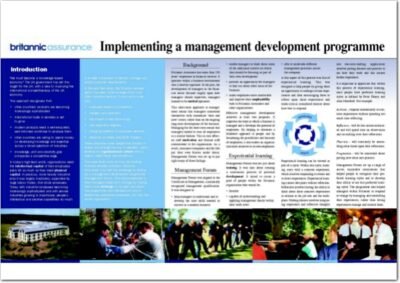Data-driven pricing is a strategic approach that leverages quantitative data to inform pricing decisions. This methodology contrasts sharply with traditional pricing strategies, which often rely on intuition, historical pricing, or competitor analysis without a robust analytical foundation. In essence, data-driven pricing utilises a wealth of information—ranging from customer behaviour and market trends to economic indicators—to establish optimal price points that can enhance profitability and market share.
By harnessing advanced analytics and machine learning algorithms, businesses can dynamically adjust their prices in real-time, responding to fluctuations in demand, competitor actions, and other external factors. The concept of data-driven pricing is rooted in the belief that informed decisions yield better outcomes. Companies that adopt this approach can identify patterns and correlations within their data that may not be immediately apparent.
For instance, a retailer might discover that certain products sell better at specific times of the year or that price sensitivity varies significantly among different customer segments. By understanding these nuances, businesses can tailor their pricing strategies to maximise revenue while ensuring customer satisfaction. This level of insight transforms pricing from a static decision into a dynamic process that evolves with the market landscape.
Summary
- Data-driven pricing involves using data to set prices for products or services, based on factors such as customer behaviour, market trends, and competitor pricing.
- Data plays a crucial role in informing pricing strategies, helping businesses to understand customer preferences, market demand, and price elasticity.
- The benefits of data-driven pricing include improved pricing accuracy, better customer segmentation, increased profitability, and enhanced competitiveness in the market.
- Implementing data-driven pricing in business requires investment in data analytics tools, skilled personnel, and a data-driven culture within the organisation.
- Challenges of data-driven pricing include data privacy concerns, data quality issues, and the need for continuous monitoring and adjustment of pricing strategies.
The Role of Data in Pricing Strategies
Data plays a pivotal role in shaping effective pricing strategies by providing insights that guide decision-making processes. At the core of data-driven pricing is the collection and analysis of various data types, including historical sales data, customer demographics, and competitive pricing information. This data serves as the foundation for predictive analytics, which can forecast future sales trends based on past performance.
For example, a company might analyse seasonal sales patterns to determine the optimal price for a product during peak shopping periods, ensuring they capitalise on increased consumer demand. Moreover, data enables businesses to segment their customer base more effectively. By understanding the distinct preferences and behaviours of different groups, companies can implement targeted pricing strategies that resonate with specific audiences.
For instance, a subscription service might offer tiered pricing based on usage patterns, allowing heavy users to pay more while providing discounts to occasional users. This level of granularity not only enhances customer satisfaction but also maximises revenue potential by aligning prices with perceived value.
Benefits of Data-Driven Pricing

The advantages of adopting a data-driven pricing strategy are manifold. One of the most significant benefits is the ability to optimise pricing in real-time. In industries characterised by rapid changes in demand or competitive pressures, such as e-commerce or hospitality, the ability to adjust prices dynamically can lead to substantial revenue gains.
For instance, airlines frequently employ data-driven pricing models to adjust ticket prices based on factors such as remaining seat availability, time until departure, and historical booking patterns. This flexibility allows them to maximise occupancy rates while ensuring that prices reflect current market conditions. Another key benefit is enhanced customer insights.
By analysing purchasing behaviour and preferences, businesses can develop a deeper understanding of what drives customer decisions. This knowledge enables companies to create personalised pricing strategies that cater to individual needs and preferences. For example, an online retailer might use data analytics to identify loyal customers and offer them exclusive discounts or early access to sales events.
Such targeted approaches not only foster customer loyalty but also encourage repeat purchases, ultimately contributing to long-term profitability.
Implementing Data-Driven Pricing in Business
Implementing a data-driven pricing strategy requires a systematic approach that encompasses several critical steps. First and foremost, businesses must invest in robust data collection and analytics infrastructure. This may involve adopting advanced software solutions capable of processing large volumes of data from various sources, including sales transactions, customer interactions, and market research.
Additionally, organisations should ensure they have the necessary talent in place—data analysts and scientists who can interpret complex datasets and derive actionable insights. Once the infrastructure is established, companies need to define clear objectives for their pricing strategy. This could involve setting specific revenue targets or aiming to improve market share within a particular segment.
With these goals in mind, businesses can begin to experiment with different pricing models based on their data insights. A/B testing is a common method used in this phase; it allows companies to compare the performance of different pricing strategies in real-time and make informed adjustments based on empirical evidence.
Challenges of Data-Driven Pricing
Despite its numerous advantages, implementing a data-driven pricing strategy is not without challenges. One significant hurdle is the quality and accuracy of the data being utilised. Inaccurate or incomplete data can lead to misguided pricing decisions that may harm rather than help a business’s bottom line.
Therefore, organisations must establish rigorous data governance practices to ensure that the information they rely on is both reliable and relevant. Another challenge lies in the potential for over-reliance on algorithms and automated systems. While technology can provide valuable insights and streamline decision-making processes, it is essential for businesses to maintain a human element in their pricing strategies.
Market conditions can change rapidly due to unforeseen events—such as economic downturns or shifts in consumer sentiment—and relying solely on historical data may not account for these variables adequately. Thus, striking a balance between data-driven insights and human intuition is crucial for successful pricing strategies.
Data Sources for Data-Driven Pricing

A variety of data sources can be leveraged for effective data-driven pricing strategies. Internal sources include sales records, customer relationship management (CRM) systems, and inventory management systems. These datasets provide valuable insights into purchasing patterns, customer preferences, and stock levels, enabling businesses to make informed pricing decisions based on their own operational realities.
External data sources are equally important and can include market research reports, competitor pricing information, economic indicators, and social media sentiment analysis. For instance, companies may utilise web scraping tools to monitor competitors’ prices in real-time or employ sentiment analysis tools to gauge public perception of their brand or products on social media platforms. By integrating both internal and external data sources, businesses can develop a comprehensive understanding of the market landscape and refine their pricing strategies accordingly.
The Future of Data-Driven Pricing
The future of data-driven pricing is poised for significant evolution as advancements in technology continue to reshape the landscape. Artificial intelligence (AI) and machine learning are at the forefront of this transformation, enabling businesses to analyse vast amounts of data with unprecedented speed and accuracy. As these technologies become more sophisticated, companies will be able to implement even more granular pricing strategies that consider an array of factors—from individual customer behaviour to macroeconomic trends.
Moreover, the rise of big data analytics will further enhance the capabilities of data-driven pricing models. As organisations collect more diverse datasets—from IoT devices to mobile applications—they will gain deeper insights into consumer behaviour and preferences. This wealth of information will allow for hyper-personalised pricing strategies that cater to individual customers’ needs in real-time.
As consumers increasingly expect tailored experiences from brands, businesses that embrace these innovations will likely gain a competitive edge in the marketplace.
Examples of Successful Data-Driven Pricing Strategies
Several companies have successfully implemented data-driven pricing strategies that illustrate the effectiveness of this approach. Amazon is perhaps one of the most prominent examples; its dynamic pricing model adjusts product prices based on various factors such as demand fluctuations, competitor prices, and even time of day. This strategy has enabled Amazon to maintain its position as a market leader by ensuring competitive prices while maximising profit margins.
Another notable example is Uber’s surge pricing model, which adjusts fares based on real-time demand for rides in specific areas. During peak times or adverse weather conditions when demand surges, Uber increases its prices to balance supply with demand effectively. This strategy not only maximises revenue for drivers but also incentivises more drivers to get on the road during busy periods, ultimately improving service availability for customers.
In the retail sector, Walmart employs sophisticated analytics to optimise its pricing strategy across its vast network of stores. By analysing sales data alongside competitor prices and local market conditions, Walmart can adjust its prices dynamically to remain competitive while ensuring profitability across its product range. This approach has been instrumental in maintaining Walmart’s reputation as a low-cost leader while adapting to changing consumer preferences.
These examples underscore the transformative potential of data-driven pricing strategies across various industries. By leveraging data effectively, companies can not only enhance their profitability but also create more meaningful connections with their customers through tailored pricing approaches that reflect individual needs and market dynamics.
In a recent article on essential PPC metrics for small businesses, the importance of data-driven pricing strategies was highlighted. By analysing key performance indicators and using data to inform pricing decisions, businesses can maximise their return on investment and ensure that their advertising spend is not wasted. This approach is particularly relevant in industries such as the oil and gas sector, where management styles play a crucial role in driving profitability and efficiency. By adopting a data-driven approach to pricing, companies in this sector can gain a competitive edge and improve their bottom line.
FAQs
What is data-driven pricing?
Data-driven pricing is a pricing strategy that uses data analysis and insights to set prices for products or services. It involves collecting and analysing data on customer behaviour, market trends, and other relevant factors to determine the most effective pricing strategy.
How does data-driven pricing work?
Data-driven pricing works by collecting and analysing data from various sources, such as sales transactions, customer demographics, and market trends. This data is then used to identify patterns and trends that can help businesses make informed decisions about pricing.
What are the benefits of data-driven pricing?
Some of the benefits of data-driven pricing include the ability to set more competitive prices, increase sales and revenue, and better understand customer behaviour and preferences. It also allows businesses to adapt their pricing strategies in real-time based on market changes.
What are the challenges of implementing data-driven pricing?
Challenges of implementing data-driven pricing include the need for accurate and reliable data, the complexity of data analysis, and the potential for resistance to change within an organisation. Additionally, businesses may need to invest in technology and expertise to effectively implement data-driven pricing.
How is data-driven pricing different from traditional pricing methods?
Data-driven pricing differs from traditional pricing methods in that it relies on data analysis and insights to set prices, rather than relying on intuition or industry norms. It also allows for more flexibility and adaptability in pricing strategies based on real-time data.
 Implementing a management development programme (PDF)
Implementing a management development programme (PDF) 